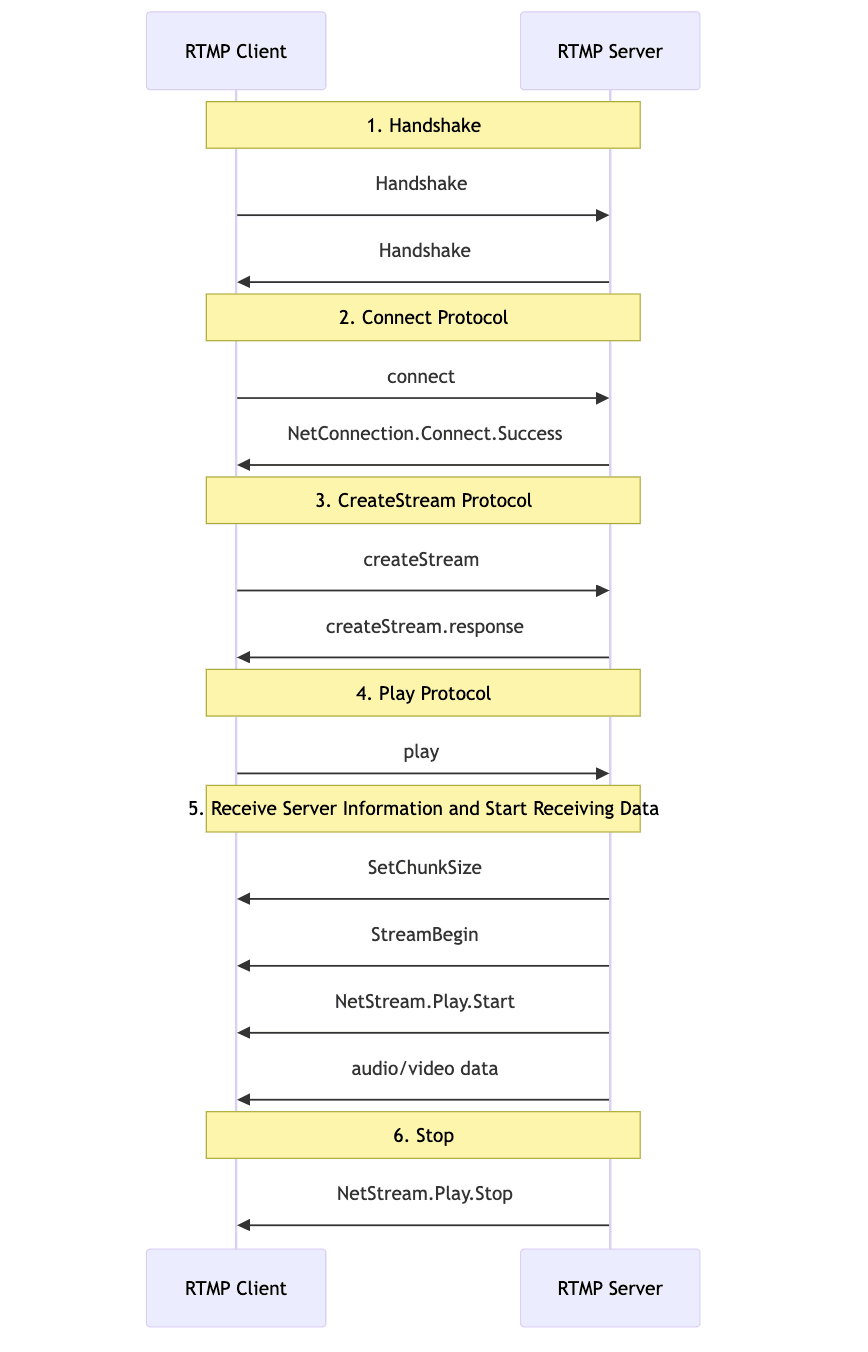Real-Time Messaging Protocol (RTMP) has been a cornerstone in the world of live streaming and real-time communication for over a decade. Developed by Macromedia (later acquired by Adobe Systems), RTMP has played a crucial role in shaping how we consume and interact with live digital content. This comprehensive guide will delve deep into the intricacies of RTMP, its structure, variants, and how it continues to influence the streaming landscape.
What is RTMP?
RTMP, or Real-Time Messaging Protocol, is a proprietary protocol designed for streaming audio, video, and data over the Internet. Initially developed to enable real-time communication between Adobe Flash Player and a server, RTMP has since become a standard in the streaming industry, used by numerous platforms and services.
Key Features of RTMP:
- Low Latency: RTMP is known for its ability to deliver content with minimal delay, typically around 5 seconds.
- Reliable Transmission: Built on top of TCP, RTMP ensures reliable data delivery.
- Multiplexing: Allows multiple streams of data to be transmitted simultaneously over a single connection.
- Dynamic Streaming: Supports adaptive bitrate streaming, allowing quality adjustments based on the viewer's network conditions.
The Evolution of RTMP
RTMP has gone through several iterations since its inception:
- Original RTMP: The base protocol, operating over TCP on port 1935.
- RTMPE: An encrypted version of RTMP, adding a layer of security.
- RTMPT: RTMP encapsulated within HTTP requests, useful for bypassing firewalls.
- RTMPS: Similar to RTMPT, but uses HTTPS connections for enhanced security.
RTMP Structure and Communication
Understanding the structure of RTMP messages and how they're transmitted is crucial for grasping the protocol's efficiency.
RTMP Message Structure
The basic unit of data in RTMP is called a message. Each message consists of two main parts:
Message Header
- Message Type
- Payload Length
- Timestamp
- Stream ID
Message Body
- The actual data being transmitted
Here's a visual representation of the RTMP message structure:

Chunking in RTMP
To optimize transmission, RTMP divides messages into smaller units called chunks, typically 128 bytes each. This chunking process allows for:
- Efficient use of bandwidth
- Interleaving of different message types
- Prioritization of certain data types (e.g., audio over video)
RTMP Communication Process
Establishing an RTMP connection and transmitting data involves several steps:

Handshake:
- Client and server exchange three chunks of data
- Verifies protocol version and establishes timestamps
Connection Establishment:
- Client sends a connect request
- Server acknowledges with a connect response
Stream Creation:
- Client requests the creation of a stream
- Server responds with a stream ID
Play/Publish:
- For playback: Client sends a play command
- For broadcasting: Client sends a publish command
Data Transmission:
- Audio and video data are sent as separate messages
- Control messages manage the flow of data
Termination:
- Either party can initiate termination of the connection
RTMP in Action: Use Cases and Applications
RTMP's low latency and reliability make it suitable for various streaming scenarios:
- Live Streaming: Used by platforms like YouTube Live, Facebook Live, and Twitch.
- Video Conferencing: Powers real-time video communication in applications.
- Online Gaming: Facilitates live game streaming and interactive gaming experiences.
- E-Learning: Enables real-time interaction in virtual classrooms.
Advantages of RTMP
- Low Latency: Crucial for live interactions and real-time communication.
- Widespread Support: Despite being proprietary, RTMP is supported by many streaming platforms and servers.
- Adaptive Bitrate Streaming: Can adjust stream quality based on viewer's network conditions.
- Reliable Delivery: Built on TCP, ensuring all data packets are received.
Challenges and Limitations of RTMP
While RTMP has been a staple in streaming technology, it faces several challenges:
- Flash Dependency: Originally designed for Flash, which is now deprecated.
- Limited HTML5 Support: Doesn't natively work with HTML5 video players.
- Firewall Issues: Standard RTMP can be blocked by firewalls, necessitating RTMPT or RTMPS.
- Scalability Concerns: May face challenges in large-scale deployments compared to newer protocols.
The Future of RTMP
As the streaming landscape evolves, RTMP's role is changing:
- Backend Use: Still widely used on the server side of many streaming setups.
- Integration with New Technologies: Combined with technologies like WebRTC for first-mile contribution.
- RTMP Alternatives: Shift towards protocols like SRT (Secure Reliable Transport) for low-latency streaming.
- HLS and DASH: Increasing use of HTTP-based streaming protocols for delivery to end-users.
Implementing RTMP: Best Practices
For developers and streaming engineers working with RTMP:
- Use Secure Variants: Prefer RTMPS over standard RTMP for enhanced security.
- Optimize Chunk Size: Adjust chunk size based on network conditions and content type.
- Implement Adaptive Bitrate: Utilize RTMP's adaptive streaming capabilities for better user experience.
- Monitor Connection Quality: Implement heartbeat mechanisms to ensure connection stability.
- Consider Fallback Options: Have alternatives like HLS ready for clients that don't support RTMP.
RTMP vs Other Streaming Protocols
Comparing RTMP with other popular streaming protocols:
| Protocol | Latency | Scalability | Adaptive Bitrate | HTML5 Support |
| RTMP | Low | Moderate | Yes | Limited |
| HLS | High | Excellent | Yes | Native |
| DASH | Medium | Excellent | Yes | Native |
| WebRTC | Very Low | Limited | Limited | Native |
Conclusion
RTMP has been a fundamental technology in the evolution of live streaming and real-time communication. While facing challenges in the modern web environment, its low latency and reliability ensure its continued relevance, especially in the backend of streaming infrastructures. As the industry moves towards more open and web-friendly protocols, understanding RTMP remains crucial for anyone working in the field of streaming technology.
The future of streaming will likely see a hybrid approach, combining the strengths of RTMP with newer technologies to deliver high-quality, low-latency streaming experiences across a variety of platforms and devices. For developers and streaming professionals, staying informed about RTMP and its evolving role in the streaming ecosystem is essential for creating robust and efficient streaming solutions.